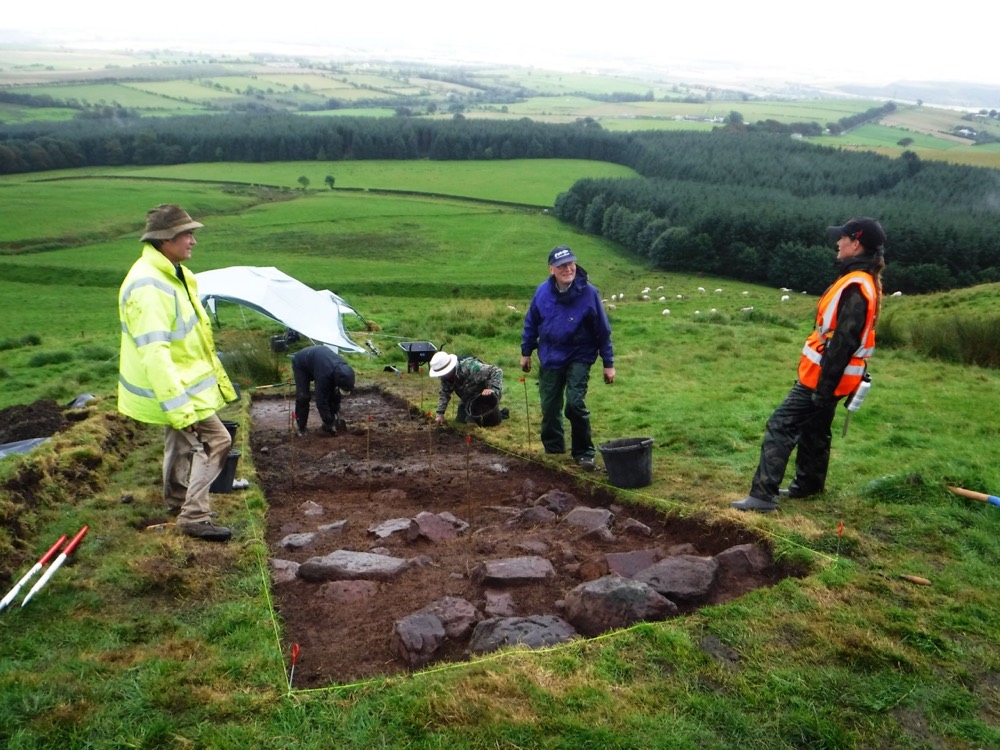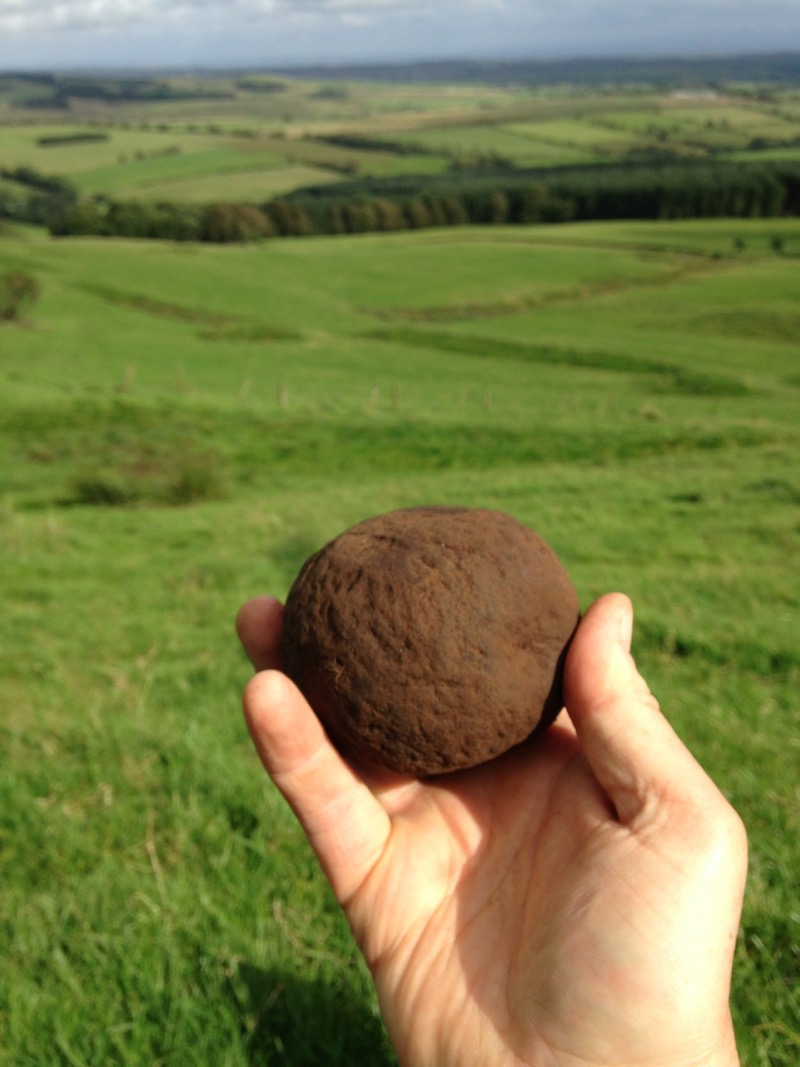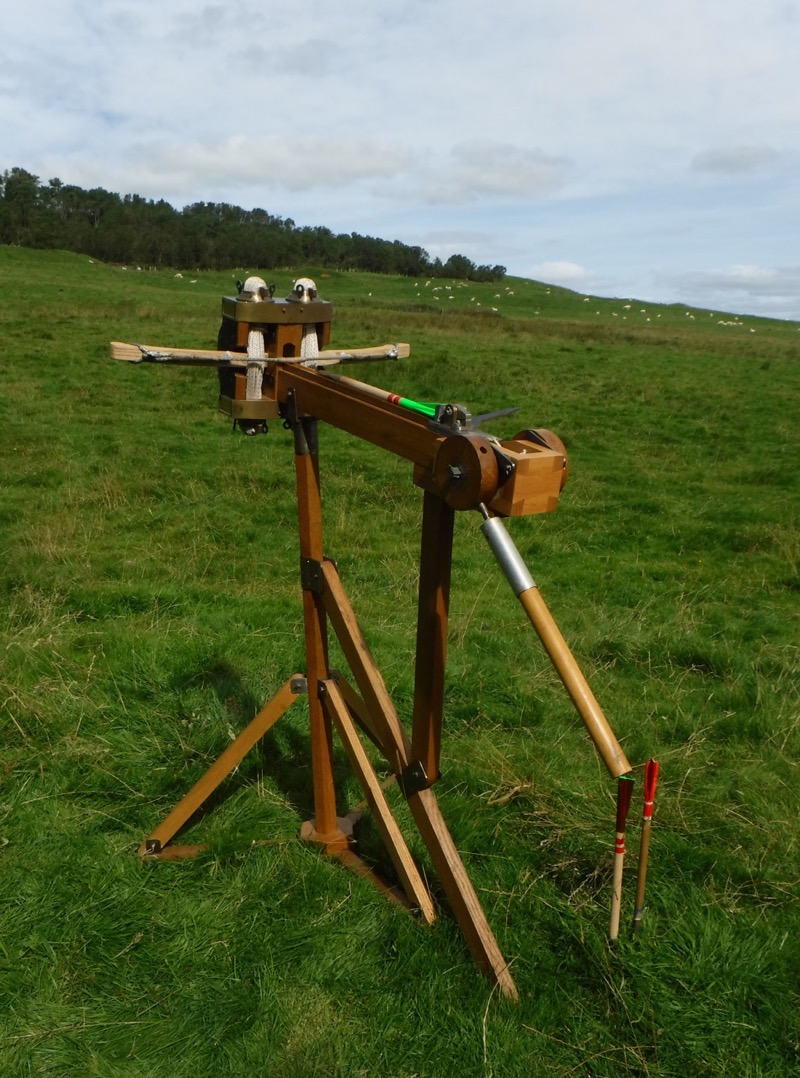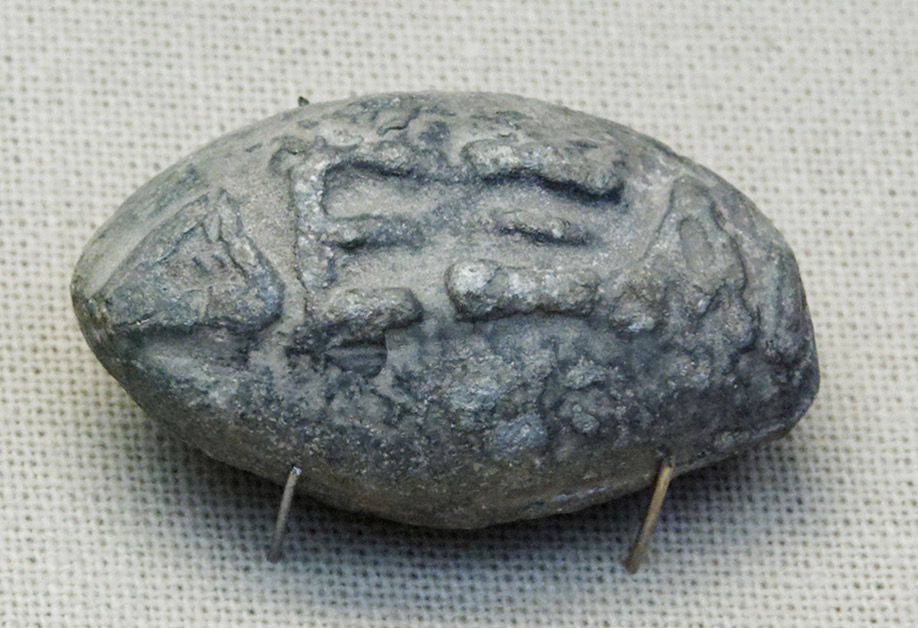In Photos: 1,800-Year-Old Roman Battle Site
Burnswark Hill

Burnswark Hill in the Dumfreisshire region of south-western Scotland is thought to have been the site of an assault by Roman legions in the second Century A.D., against native tribespeople defending the hilltop fort.
Today the site comprises the remains of the hill fort and two Roman military camps, one on each side of the hilltop.
Archaeologists think the camps were used by the Roman forces to stage an "all-out attack" on the defenders, as a punishment for their resistance to Roman rule.
This image shows Burnswark Hill from the north, with one of the Roman camps visible on the slopes. [Read the full story on the sling bullets]
Sling bullets

Among the finds by archaeologists at the Burnswark Hill battle site are large acorn-shaped and lemon-shaped Roman sling bullets cast from lead, shown at the top and center of this image.
The largest are about 1.2 inches (3 centimeters) long and weigh about 1 ounce (30 grams).But about 20 percent of the Roman sling bullets found at Burnswark Hill are smaller and have been drilled with a 0.2 inch (5mm) hole, including the two bullets at the bottom of this image.
John Reid, an archaeologist with the Trimontium Trust who has studied the unusual sling bullets, believes they were designed to make a noise in flight to keep enemy heads down. [Read the full story on the sling bullets]
Get the world’s most fascinating discoveries delivered straight to your inbox.
Excavating in Scotland

The Trimontium Trust is directing a year-long archaeological investigation of Burnswark Hill in partnership with the Dumfries and Galloway Museums Service.
As well as making a detailed geophysical survey of the site, the researchers have used sensitive metal detectors to identify buried deposits of particular metals — such as the lead used in Roman sling bullets — without disturbing the ground. [Read the full story on the sling bullets]
Roman artillery

Burnswark Hill site is littered with the remains of the Roman battle against the native defenders in the hilltop fort. Among the finds are ammunition from Roman artillery weapons, such as this stone ball which may have been fired from a ballista, or military catapult.
The researchers say the large quantities of Roman ammunition found at Burnswark Hill indicates that they wanted to inflict a crushing victory over the defenders that would send a message to other rebellious tribespeople. [Read the full story on the sling bullets]
Roman Scorpio

This image shows a replica Roman Scorpio (Scorpian) crossbow, one type of small artillery weapon used by Roman forces.
It used torsion springs made from twisted rope to shoot iron-tipped bolts at ranges up to 400 yards (400 meters), and it could fire up to four bolts a minute. Early Roman legions were equipped with a contingent of 60 Scorpios that could fire a combined 240 bolts per minute at the enemy.
Roman reenactors

As well as conventional excavations at Burnswark Hill, the year-long research project includes opportunities for members of the public to volunteer to work with archaeologists as they explore the site. The researchers have also given public lectures about their finds, and local museums have hosted interactive exhibitions about the project.
In this image, a reenactor named Quintus shows pieces of Roman pottery to visitors at an Open Day at the Burnswark Hill site.
Assyrian slingers

Slings have been used since at least Neolithic times as a hunting weapon, and as a weapon of war for thousands of years.
Images of military slingers are found in several ancient carvings, including this wall fragment on display at the British Museum from the Neo-Assyrian city of Nineveh, located in what is now Iraq. Dated from the beginning of the seventh century B.C., it shows Assyrian slingers in action at a siege of the Israelite city of Lachish in 710 B.C.
Greek slings

Slings were also a widely used weapon of war in ancient Greece, where the tradition developed of inscribing sling bullets with insulting messages. This sling bullet from the fourth century B.C., found at Athens, shows the Greek word ΔΕΞΑΙ ("dexai") in high relief, which means "Take This."
Later Roman sling bullets were often inscribed with slogans that invoked the names of commanding generals, including "For Pompey!" and "Victory for Caesar!"
Tom Metcalfe is a freelance journalist and regular Live Science contributor who is based in London in the United Kingdom. Tom writes mainly about science, space, archaeology, the Earth and the oceans. He has also written for the BBC, NBC News, National Geographic, Scientific American, Air & Space, and many others.


